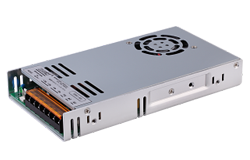nuus
Exploring the Function and Applications of Bidirectional Converters in Electrical Engineering
Author: ZYG Power Module Time: 2023-6-18
In the realm of electrical engineering, bidirectional converters play a critical role in powering systems that require energy to flow in both directions. These devices are commonly used in applications such as renewable energy systems, electric vehicles, and power grids to ensure that energy is efficiently converted and utilized. In this article, we will delve into the function and applications of bidirectional converters and explore their significance in the field of electrical engineering.
The Function of Bidirectional Converters
A bidirectional converter is an electronic device that can convert power from one form to another and allow energy to flow in both directions. It is essentially a device that can convert DC power into AC power and vice versa. The converter can also regulate the flow of energy to ensure that the power is distributed evenly and efficiently.
The basic operation of a bidirectional converter involves four switches, which are used to control the flow of current. The switches are arranged in a specific way to ensure that the current can flow in both directions. The converter operates by controlling the timing and duration of the switches to ensure that the current flows in the desired direction.
Applications of Bidirectional Converters
Bidirectional converters have numerous applications in electrical engineering. One of the most common applications is in renewable energy systems. With the increasing demand for cleaner and more efficient energy, many people are turning to renewable energy sources such as solar panels and wind turbines. However, these systems generate DC power, which needs to be converted into AC power for use in homes and businesses. Bidirectional converters play a crucial role in this process, converting the DC power generated by the renewable energy system into AC power that can be used by the electrical grid.
Another application of bidirectional converters is in electric vehicles. Electric vehicles require a power source to charge their batteries, and bidirectional converters can be used to convert the AC power from the electrical grid into DC power that can be stored in the vehicle’s battery. When the vehicle is in use, the bidirectional converter can convert the DC power from the battery into AC power that can be used to power the vehicle’s motor.

Bidirectional converters are also used in power grids to ensure that energy is distributed efficiently. They can be used to control the flow of energy between different parts of the grid, ensuring that energy is distributed evenly and preventing blackouts.
Afsluiting
In conclusion, bidirectional converters play a critical role in powering systems that require energy to flow in both directions. They are used in applications such as renewable energy systems, electric vehicles, and power grids to ensure that energy is efficiently converted and utilized. The basic function of a bidirectional converter involves converting power from one form to another and regulating the flow of energy to ensure that it is distributed evenly. As demand for cleaner and more efficient energy continues to grow, bidirectional converters will become increasingly important in the field of electrical engineering.
vorige: The Medical Power Series: Empowering Patients with Knowledge and Care
volgende: Custom Type Power Series: The Ultimate Guide to Creating Unique and Effective Typography
relevante inligting
-
2022-3-30
Is 'n pasgemaakte kragmodule beter as 'n gewone kragmodule
Die vinnige ontwikkeling van rekenaartegnologie lei mense in die inligtingsamelewing in, en bevorder ook die vinnige ontwikkeling van kragmodule-tegnologie. In die tagtigerjare het die rekenaar die skakelkragtoevoer ten volle gebruik, die eerste wat die rekenaarkragvervanging voltooi het. Dan het skakelkragtoevoertegnologie die veld van elektroniese en elektriese toerusting betree. In vandag se samelewing, wanneer jy 'n kragmodule koop, kies jy 'n algemene kragmodule of 'n pasgemaakte kragmodule? In die meeste gevalle is 'n universele kragmodule beskikbaar, terwyl 'n pasgemaakte kragmodule spesifiek vir sekere situasies opgestel word. Besluit dan volgens die werklike behoeftes van kliënte of jy die kragmodule wil aanpas of 'n universele kragmodule moet koop. ...
Sien besonderhede -
2023-6-16
Bidirectional DC DC Converter: Principles and Applications
A bidirectional DC-DC converter is a power converter that can convert DC voltage from one level to another level, in both directions. This type of converter is used in applications such as electric vehicles, renewable energy systems, and energy storage systems, where there is a need for bidirectional power flow. In this article, we will discuss the principles of bidirectional DC-DC converters and their applications. Principles of Bidirectional DC-DC Converters A bidirectional DC-DC converter is a power converter that can operate in two modes: buck mode and boost mode. In buck mode, the converter steps down the input voltage to a lower output voltage. In boost mode, the converter steps up the input voltage to a higher output voltage. The...
Sien besonderhede -
2023-12-30
AC/DC Power Supply Module: Harnessing Electricity for Efficient Energy Conversion
Power supply modules play a critical role in converting electricity from the grid into a form that can be used by various electronic devices. Among these modules, the AC/DC power supply module is one of the most commonly used due to its ability to convert alternating current (AC) into direct current (DC). This conversion process is crucial as many electronic devices, such as computers and smartphones, require DC power to operate. The AC/DC power supply module consists of several key components that work together to efficiently convert electricity. One of the main components is the transformer, which is responsible for stepping down the voltage from the AC input. The transformer reduces the high voltage from the grid to a lower...
Sien besonderhede -
2023-6-26
24V AC to DC Converter: Efficiently Transforming Alternating Current to Direct Current
In many electrical systems, it is necessary to convert alternating current (AC) to direct current (DC). This is particularly true in applications such as automotive electronics, where a steady voltage supply is required for powering various electrical components. One of the most commonly used devices for converting AC to DC is the 24V AC to DC converter. The 24V AC to DC converter is a device that transforms the incoming AC voltage into a steady DC voltage output. This conversion can be achieved through a number of different techniques, including rectification, smoothing, and filtering. The first step in the conversion process is rectification, which involves converting the AC voltage into a pulsating DC voltage. This is done using a diode...
Sien besonderhede -
2023-6-15
Car Outlet Converter: The Solution for Powering Your Electronics on the Go
In today's fast-paced world, staying connected is more important than ever. Whether you are using your phone to stay in touch with friends and family, your tablet to catch up on work, or your laptop to stream movies during a road trip, having a reliable source of power is essential. That's where a car outlet converter comes in. This simple device can provide power to all of your electronics on the go, making it the perfect solution for anyone who needs to stay connected while traveling. What is a Car Outlet Converter? A car outlet converter, also known as a car power inverter, is a device that allows you to plug your electronics into your car's cigarette lighter or power...
Sien besonderhede -
2023-8-13
12V AC to DC Converter for LED: Efficiently Powering Your LED Lighting Systems
Introduction In recent years, LED lighting systems have gained immense popularity due to their energy efficiency and longer lifespan compared to traditional lighting options. However, powering these systems can be a challenge, as they require direct current (DC) while most power sources provide alternating current (AC). To bridge this gap, a 12V AC to DC converter comes into play. This article aims to explore the significance of this converter in efficiently powering LED lighting systems, shedding light on its functionality, benefits, and applications. Functionality and Working Principle At its core, a 12V AC to DC converter is an electrical device that converts alternating current (AC) into direct current (DC). This process involves several key components, including a transformer, rectifier, and...
Sien besonderhede


















